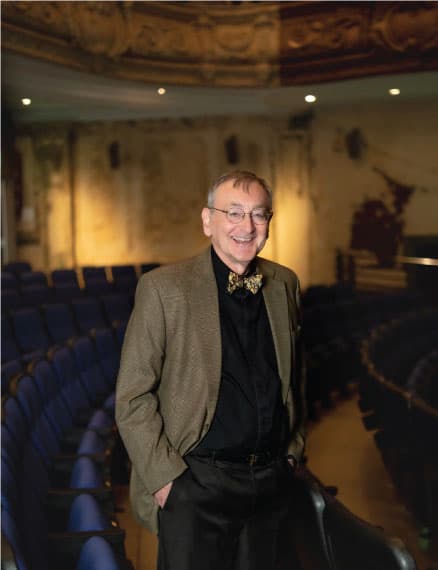Personality Disorders and Personal Worlds: WORLD BUILDERS at Contemporary American Theater Festival
Posted on BroadwayWorld.com July 13, 2015
Johnna Adams is hardly the first playwright to experience at firsthand the connection between mental illness and creativity. (Adams acknowledges her bipolar disorder but says she would not have had a playwriting career without it.) In having to deal with bipolar’s double-edged inspiration, she joins the illustrious company of the likes of O’Neill, Strindberg, Ibsen, and Williams. Nor is she the first to suggest that madness may be inspirational to an artist. DeQuincey, Poe and Coleridge, among others, have drawn that connection. But surely few have painted the connection in quite the bright colors that World Builders: A Love Story, receiving its world premiere at Shepherdstown’s Contemporary American Theater Festival, does.
Both the characters in World Builders, Whitney (Brenna Palughi) and Max (Chris Thorn), have been compelled by their disorder to turn their backs on the real world, and on the actual human connections available to them with friends and family, to obsess instead about imaginary worlds of their own making.
Whitney’s world is a dynamic, bustling science fiction epic with, as she brags, “seven colony worlds that Earth’s survivors fled to,” which now contain “seventy-two alien-human hybrid races.” Her fantasy embraces “forty-seven major characters and one hundred and thirty minor characters.” In particular, she revels in the love story of Mikor and Selestina, a prince and princess who meet when her intergalactic space yacht encounters his pirate flagship. In other words, in her mind she is helming a fictive universe even more complex than that of Game of Thrones (a comparison Adams herself draws in an interview in the program), though it seems a happier and more swashbuckling place than Westeros.
Max’s fantasy world is quite different and far more ominous, clearly owing much to the disturbing material of Silence of the Lambs.
But for each of them, their world, however artistic and creative, is also of a place of some danger, because it has supplanted the real world, to the point where mere human contact is of next to no interest to either of them. Hence their families have forced them into a locked ward at the Johns Hopkins Hospital, where they are on a controlled trial of a medicine that will rid them of, in Whitney’s words: “[O]ur schizoid personality disorders. Anti-social tendencies. Brief reactive psychoses. Autoerotic fixations. Dissociative and narcissistic behavior.”
The trouble is, the medicine is working. It has two important effects. It is freeing them up to fall in love, but it is also sundering them from their fantasy worlds. Thus the second half of the (intermissionless) play is taken up with a number of questions that boil down to comparing the value of a sane life with love but without creativity and an insane life with creativity but without love. I will not reveal the resolution, but I will say that it is a thoughtful and earned one.
Adams is author of the challenging Gidion’s Knot, which also premiered at Contemporary American Theater Festival in 2012, a play which also explores tradeoffs between artistic and creative license and the demands of civilization. It is interesting to see her evolution as an artist. World Builders is arguably a more cheerful, and is certainly a funnier, work, though Gidion’s Knot looks into the existential furnace more deeply. And World Builders is certainly a less compact piece of writing. In a play with a running time of about an hour and a half, I felt that about a half hour was surplusage. Much of the dispensable material was devoted to Whitney’s world. While Whitney’s and later Max’s descriptions of Whitney’s world are funny and charming, there is too much of them. There is also too much wringing of the hands about how to resolve the play’s dilemmas, and perhaps too much of the awkwardness of these two highly disengaged personalities beginning to experience love.
I would expect audiences to forgive the play’s overstuffing, if only because of the lovely direction by Nicole A. Watson, which makes this odd story of mostly disengaged people totally engaging most of the time, and the work of Thorn and Palughi, who make both their characters’ jagged edges and their soft places appealing. Palughi, in particular, blessed with a most animated face and narrative enthusiasm, could probably tell me about Whitney’s forty-seven major characters and still keep me amused.
Copyright (c) Jack L. B. Gohn, except for production photo. Photo credit: Seth Freeman.


 I lived in London and Vienna before coming to the United States, and grew up mainly in Ann Arbor. I was writing plays and stories as early as grade school. My undergraduate years at the University of Pennsylvania, where I first reviewed theater, for the college paper, were succeeded by graduate study at the Johns Hopkins University, where I earned a doctorate in English Literature.
I lived in London and Vienna before coming to the United States, and grew up mainly in Ann Arbor. I was writing plays and stories as early as grade school. My undergraduate years at the University of Pennsylvania, where I first reviewed theater, for the college paper, were succeeded by graduate study at the Johns Hopkins University, where I earned a doctorate in English Literature.